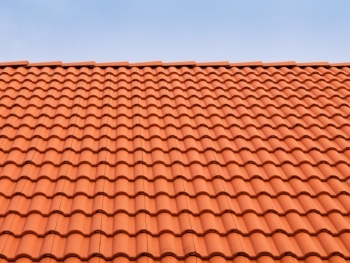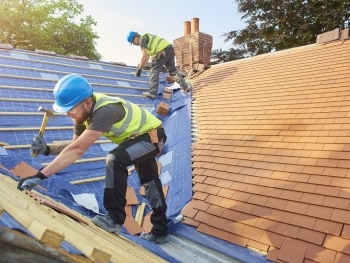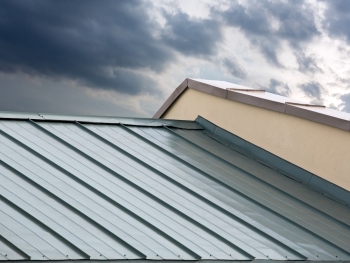Portland's unique climate and environmental conditions pose distinct challenges for homeowners when it comes to roofing. From heavy rainfall to occasional snow and strong winds, understanding common roofing problems and how to address them is crucial for maintaining the integrity of your home. This comprehensive guide explores prevalent roofing issues in Portland and provides practical solutions to help you manage and resolve these problems effectively.
1. Leaks and Water Damage
Problem: Roof leaks are a common issue in Portland due to the frequent rainfall. Leaks can cause significant damage to the interior of your home, including mold growth, wood rot, and damage to insulation and ceilings.
Causes:
- Damaged Shingles: Cracked, curled, or missing shingles can allow water to penetrate.
- Faulty Flashing: Flashing around chimneys, vents, and skylights can deteriorate or become dislodged.
- Clogged Gutters: Blocked gutters can cause water to overflow and seep under the roof.
Solutions:
- Inspect Shingles: Regularly check for damaged or missing shingles and replace them as needed.
- Repair Flashing: Ensure flashing is properly sealed and replaced if damaged. Use roofing cement or flashing tape to seal minor gaps.
- Clean Gutters: Maintain clean gutters to ensure proper water flow and prevent overflow. Consider installing gutter guards to minimize debris buildup.
2. Moss and Algae Growth
Problem: Portland’s moist environment creates ideal conditions for moss and algae growth on roofs. Moss and algae can cause deterioration of roofing materials and lead to additional problems if left unchecked.
Causes:
- Moisture Retention: Stagnant water on roofs encourages the growth of moss and algae.
- Poor Ventilation: Inadequate roof ventilation can trap moisture, promoting growth.
Solutions:
- Remove Moss and Algae: Use a moss removal solution or a mixture of water and bleach to clean affected areas. Gently scrub with a soft-bristle brush to avoid damaging the shingles.
- Improve Ventilation: Ensure your roof has proper ventilation to reduce moisture buildup. Install or repair roof vents to enhance airflow.
- Install Zinc or Copper Strips: These metals can inhibit moss and algae growth when installed along the roof ridge.
3. Ice Dams
Problem: Though less common than in colder climates, ice dams can occur during Portland's rare snow events. Ice dams form when heat from the house melts snow on the roof, which then refreezes at the eaves, blocking proper drainage and causing water backup.
Causes:
- Inadequate Insulation: Poor insulation in the attic can lead to uneven roof temperatures and snow melting.
- Roof Design: Certain roof designs can exacerbate ice dam formation by creating areas where snow and ice can accumulate.
Solutions:
- Improve Insulation: Ensure your attic is well-insulated to maintain a consistent roof temperature and prevent snow melt.
- Install Ice and Water Shield: Apply ice and water shield underlayment to the lower sections of your roof to prevent water from seeping under shingles.
- Clear Snow: After a snowfall, carefully remove snow from the roof using a roof rake to prevent ice dam formation.
4. Roof Punctures and Holes
Problem: Roof punctures and holes can be caused by debris, fallen branches, or improper installation. These issues can lead to leaks and structural damage if not addressed promptly.
Causes:
- Falling Debris: Branches, hail, or other debris can puncture roofing materials.
- Improper Installation: Poorly installed roofing materials or fixtures can create weak points.
Solutions:
- Inspect for Damage: Regularly check for signs of punctures or holes and inspect after severe weather events.
- Repair Punctures: Use roofing cement or a patch kit to seal small punctures and holes. For larger damage, consult a professional for proper repairs.
- Trim Overhanging Branches: Keep tree branches trimmed to reduce the risk of falling debris.
5. Shingle Curling and Buckling
Problem: Shingle curling and buckling can occur due to aging, improper installation, or poor ventilation. Curled or buckled shingles can compromise the roof's waterproofing and lead to leaks.
Causes:
- Aging Materials: As shingles age, they can become brittle and curl.
- Improper Installation: Incorrectly installed shingles or inadequate spacing can cause curling.
- Poor Ventilation: Inadequate ventilation can lead to excessive heat and moisture, causing shingles to curl.
Solutions:
- Replace Aged Shingles: If shingles are severely curled or buckled, replace them with new ones. Ensure they are installed correctly.
- Improve Ventilation: Address ventilation issues by adding or repairing roof vents and ensuring proper attic airflow.
- Check Installation: Verify that shingles are installed according to manufacturer specifications and that they have the proper spacing.
6. Roof Flashing Issues
Problem: Flashing is crucial for directing water away from roof joints and penetrations. Damaged or improperly installed flashing can lead to leaks and water damage.
Causes:
- Deterioration: Over time, flashing can rust, crack, or become dislodged.
- Improper Installation: Flashing that is not installed correctly may fail to provide proper protection.
Solutions:
- Inspect Flashing: Regularly check flashing around chimneys, vents, and skylights for signs of damage or wear.
- Repair or Replace Flashing: Seal minor gaps with roofing cement or replace damaged flashing as needed.
- Ensure Proper Installation: If you’re installing new flashing, follow manufacturer guidelines or consult a professional for proper installation.
7. Ventilation Problems
Problem: Proper roof ventilation is essential for maintaining a balanced temperature and preventing moisture buildup in the attic. Poor ventilation can lead to issues such as mold growth and premature roofing material deterioration.
Causes:
- Inadequate Ventilation: Insufficient vents or blocked vents can trap heat and moisture.
- Improper Vent Placement: Incorrect placement of vents can reduce their effectiveness.
Solutions:
- Check Ventilation: Ensure that your roof has an adequate number of vents and that they are not obstructed.
- Install Additional Vents: Add more vents if necessary to improve airflow and prevent moisture buildup.
- Regular Maintenance: Keep vents clean and free from debris to ensure proper function.
8. Sagging Roof Deck
Problem: A sagging roof deck is a serious issue that can compromise the structural integrity of your roof. It often indicates underlying problems such as excess weight, water damage, or poor installation.
Causes:
- Excess Weight: Accumulated snow, ice, or other heavy materials can strain the roof deck.
- Water Damage: Prolonged water exposure can weaken the roof deck and cause sagging.
- Structural Issues: Poor construction or damaged rafters can lead to a sagging roof deck.
Solutions:
- Assess the Damage: Consult a roofing professional to assess the extent of the damage and determine the cause.
- Reinforce the Structure: Repair or reinforce the roof deck as needed to restore its integrity.
- Address Underlying Issues: Resolve any underlying problems, such as excess weight or water damage, to prevent future sagging.
9. Flashing Around Skylights
Problem: Skylights can add natural light to your home but can also be a source of leaks if not properly flashed and sealed. Issues with skylight flashing can lead to water intrusion.
Causes:
- Improper Installation: Incorrectly installed skylight flashing can allow water to seep in.
- Deterioration: Flashing around skylights can deteriorate over time, leading to leaks.
Solutions:
- Inspect Skylight Flashing: Check the flashing around skylights for signs of damage or wear.
- Repair or Replace Flashing: Seal any gaps or replace damaged flashing to prevent leaks.
- Ensure Proper Installation: Ensure skylights are installed according to manufacturer specifications and that flashing is correctly applied.
10. Roof Edge Damage
Problem: The edges of the roof are vulnerable to damage from wind, debris, and weather. Roof edge damage can lead to leaks and compromise the roof's effectiveness.
Causes:
- Wind Damage: Strong winds can lift and damage roof edges.
- Debris Impact: Falling branches or other debris can impact and damage the roof edges.
- Weathering: Exposure to the elements can cause roof edge materials to deteriorate.
Solutions:
- Inspect Roof Edges: Regularly check the edges of your roof for signs of damage or wear.
- Repair Damage: Address any damage promptly to prevent further issues. Use roofing cement or replacement materials as needed.
- Protect Edges: Consider installing edge protection products, such as metal drip edges, to safeguard against damage.
Understanding and addressing common roofing problems in Portland is essential for maintaining the integrity of your home and preventing costly repairs. By staying vigilant and proactive, you can manage issues such as leaks, moss growth, ice dams, and more. Regular inspections, proper maintenance, and timely repairs will help ensure that your roof remains in optimal condition and continues to protect your home effectively. For expert roofing services and solutions, contact Portland Roof Repair. Our experienced team is here to help you address and resolve roofing problems, ensuring the long-term durability and performance of your roofing system.




